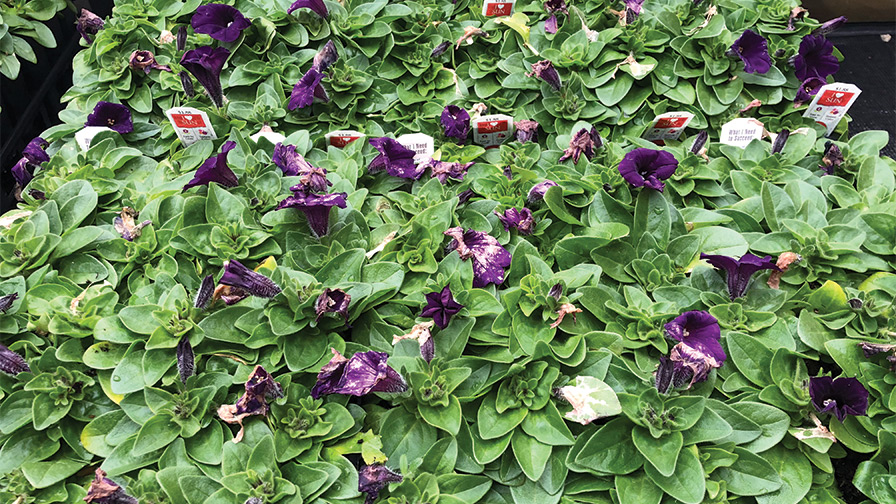Tips on Preventing Spring Botrytis Issues in the Greenhouse
 This spring’s overcast and cool weather in states like Michigan has favored the fungus Botrytis cinerea, which causes a gray mold on many greenhouse ornamentals. Recognizing the problem isn’t difficult. According to Mary Hausbeck and Blair Harlan, in the Michigan State University Department of Plant, Soil and Microbial Sciences, common disease symptoms include leaf spots and blight and stem cankers.
This spring’s overcast and cool weather in states like Michigan has favored the fungus Botrytis cinerea, which causes a gray mold on many greenhouse ornamentals. Recognizing the problem isn’t difficult. According to Mary Hausbeck and Blair Harlan, in the Michigan State University Department of Plant, Soil and Microbial Sciences, common disease symptoms include leaf spots and blight and stem cankers.
Botrytis’ calling card includes the large masses of gray conidia or spores that are produced. It is this gray conidial fuzz that gives this disease the name “gray mold.” An infection that started as a small leaf spot that’s barely noticeable can quickly expand into a large area. Flower petals that drop on the leaves serve as a food base for botrytis, allowing the pathogen to easily infect leaves. Water and high relative humidity are the key drivers for botrytis.
- Minimize Botrytis by watering in the morning so that the foliage can dry rapidly.
- Scout by looking for the brown/gray fuzziness on lower leaves that signal the need for disease control.
- Remove dead plant tissue from greenhouse benches.
While there are strategies to prevent the ramp up of this disease, many growers are now having to triage to prevent further losses. Fungicides can limit losses, but good coverage is needed and short intervals between applications may be required to slow the disease. When fungicides use a similar mode of action against Botrytis, they will have the same FRAC code. The FRAC code can be found on the fungicide label. To ensure that the Botrytis pathogen does not become resistant to fungicides, use a spray program that includes several types of fungicides that have different FRAC codes.
Click here to find an “A” and “B” Team table that shows the results of many years of testing fungicide products and lists the product name, FRAC code, and active ingredient. The products listed in the A Team are especially effective against Botrytis. The B Team products also limit disease, but may not be as effective as the A Team products and are recommended for use when disease pressure is not severe and for use in alternating programs. Always alternate among fungicide products with active ingredients that have different modes of action (FRAC codes) to delay the development of fungicide resistance in the Botrytis pathogen.
Learn more here.









